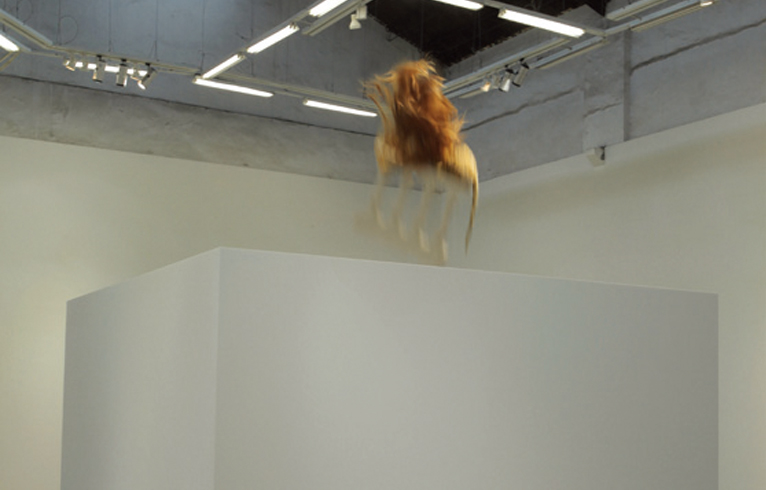MADEIN COMPANY: ACTION OF CONSCIOUSNESS
| March 20, 2012 | Post In LEAP 13

MadeIn Company have released a new set of merchandise in an exhibition that cannot be said to differ from their many and frequent shows in the past. The major works (perhaps better described as products) of “Physique of Consciousness,” held at Long March Space in Beijing earlier this year, consisted of a set of physical exercises appropriated from various cultures and religions under the banner of “spiritual fitness.” From the deadpan tone, it was apparent that the attitude concealed within was far from deadpan. In fact, coupled with the surrounding atmosphere, it produced a solemnity that exaggerated well beyond the point of satire.
This time appearing at ShanghART’s gallery space on Moganshan Road, with the similarly titled “Action of Consciousness,” MadeIn again mock their audience. Assuming the guise of a new line of products by a major corporation, the artworks intend to surprise, and the most surprising aspect of this exhibition is the way some of them must be viewed: tossed up from inside a white cube (a metaphor for the contemporary gallery space?), they quickly tumble back down into the cube and out of sight. Even in the catalogue, the audience is only given a split second glance, as the works appear only as blurred forms caught at high velocity.
In the middle of the space hang black figurative sculptures locked in sadomasochistic acts, which on closer inspection resemble African women. In the accompanying publication, also on display, the intended contrast is made all the more clear, as S&M pornography is presented alongside images of African aboriginal tribes, rendering the sexuality or primal nature of the body ambiguous. Another series of works, titled “Spirit,” is also linked to African tribes. Made from a material long favored by MadeIn, polyurethane foam, these gigantic sculptures are based on African wooden figurines, and, like the foam tiger pelt of their last show, look both savage and superficial. Another hint of satire waits for the audience to realize that the red of the sculptures’ surface comes from the same colored wax used in S&M play.
Yet to describe and analyze MadeIn’s products in this way is to fall straight into their trap, particularly if such strategies are applied to the works in “Prey.” If left as pieces of classic photo-realism, these images, which plainly depict the lives of the destitute, would be just like the kind of news photographs often posted on Weibo (a popular Chinese microblog) that provoke empathy, concern, and criticism alike. However, these photographs have been turned into classical oil paintings and hung in expensive, elaborate frames on the gallery walls, the accompanying price-tags reserving them for only the wealthiest, most distinguished bidder. Such flagrant exaggeration can now be recognized as signature MadeIn satire, and also calls to mind previous works, such as Xu Zhen’s appropriation of the photograph The Starving of Sudan in 2008.
But, once this satire is drained of its argument, all that is left is rhetoric. This kind of irony does not seem to possess an objective; it is merely a product designed by a company. As MadeIn itself turns into an event-based artwork, the significance of its specific products becomes a mere extension of this event, so it really doesn’t matter if these are made in earnest or in jest. Perhaps this is symptomatic of contemporary culture, of the attitude that anything goes, because whatever you make does not seem to have any real significance anyway. Perhaps Xu Zhen uses the “creative” MadeIn Company to participate in this universal condition, managing to completely sidestep the anxiety of meaning suffered by many contemporary artists. As I write this, I receive a Christmas e-card from MadeIn: “MadeIn wish to thank you for your continued support. Rest assured we’ll bring you new stress in 2012.” It is getting harder to take this joke seriously. Bao Dong (Translated by Dominik Salter Dvorak)

